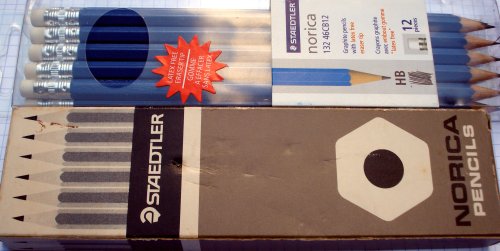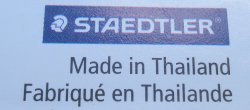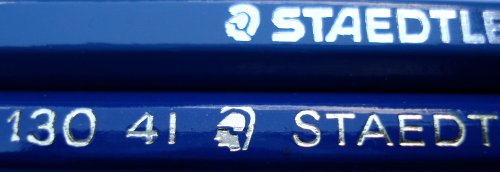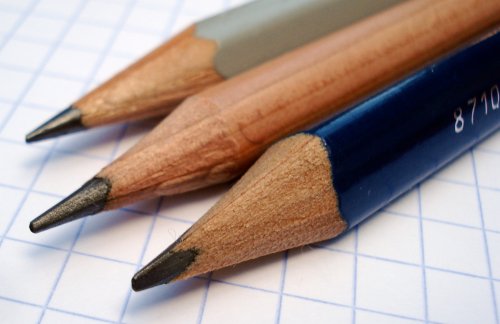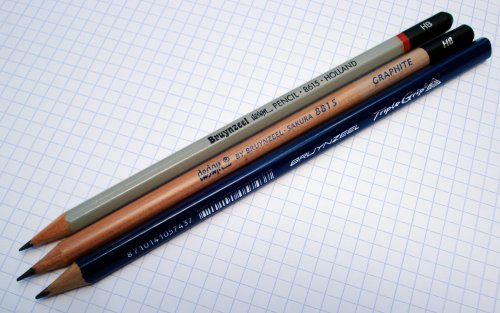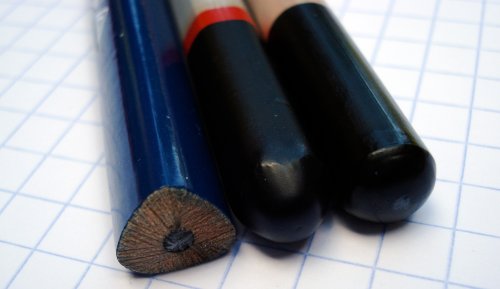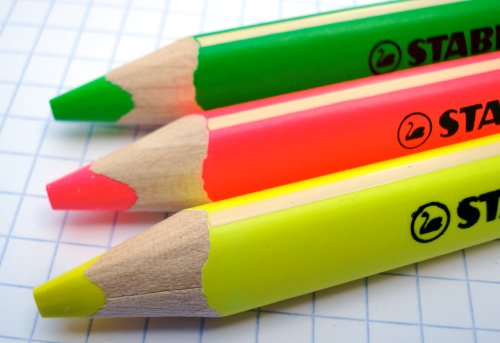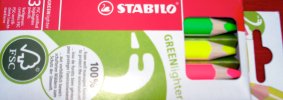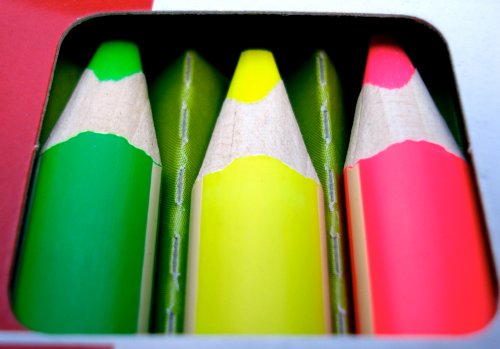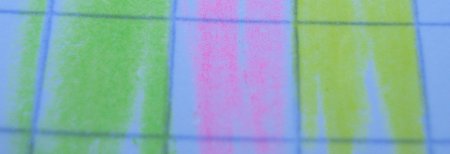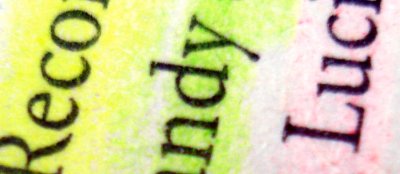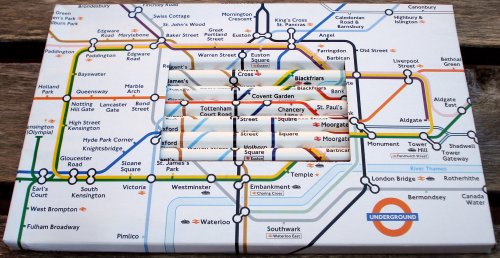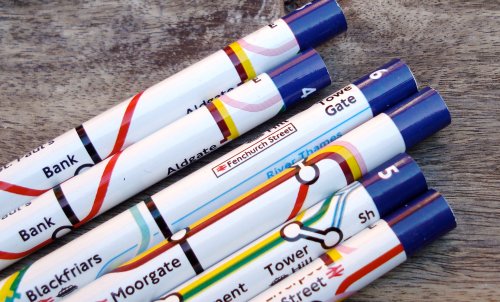
The lead pencil’s main ingredients haven’t changed much since Conté and Hardmuth figured out how to blend and bake clay and graphite approximately two hundred years ago.
Yet a few pencils acknowledge getting a bit of help from mixing in some charcoal, and some others are a bit more mysterious. Of course there are also pencils that clearly identify their marking ingredient, whether graphite, charcoal, or chalk. Here are a few pencils labelled “Carbon” or “Ebony”.
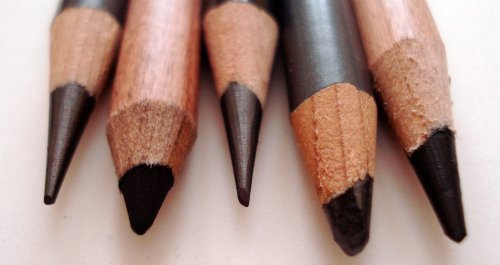
Maybe you use one or more of them? If so, maybe you can share a little about why you like the pencil.
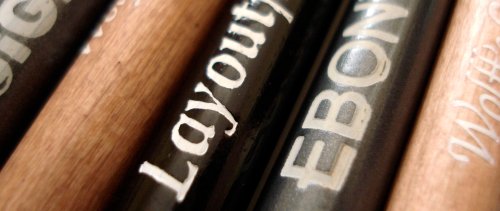
The Sanford Ebony Design 14420 is described on the packaging: “Thick, jet black lead produces expressive images with a matte finish.” To me, “jet black” is an exaggeration. The pencil has an oversized graphite core, and seems to be a typical pencil, but with a soft grade that keeps a point quite well.
General’s Layout/Ebony pencil 555 is described on the General pencil website as being “extra smooth, extra black graphite.” It also appears to be an oversize core pencil in a soft grade.
Both are nice pencils, but the “ebony” designation seems to be more a term meant to connote this pencil style, rather than referring to any specific formula. Pencils available in a wide range of grades usually use larger cores for the softer pencils anyway, so the uniqueness isn’t so clear.
They also reminded me of oversize core pencils from Japan – both Tombow and Mitsubishi offer 4B and 6B pencils with oversize cores. Derwent and Caran d’Ache are also known for oversize core drawing pencils.
Lyra Rembrandt Carbon 308/3 is one of a few very interesting specialty pencils found in the Lyra “Art Specials” set. The Carbon 308/3 is apparently a charcoal and grease pencil – but you could have fooled me. It doesn’t have that crunchiness or light weight of compressed charcoal. On the other hand, it does leave a dark matte finish. I think it’s very interesting, and suspect it is a graphite/charcoal blend.
General’s Carbon Sketch 595 is, according to General, “The perfect combination of charcoal and graphite.” It also has a metal cap. I found it to leave an intense dark black line while again not having that charcoal compacting aspect. Anyone wanting a deep black, matte line should investigate this pencil.
The Lyra 309 is apparently “carbon without grease”. Here I’m wondering if the translation was in error. While the 308 was labelled carbon, the 309 is not, and seems more like just a charcoal pencil.
Wolff’s carbon Royal Sovereign 2B is another very interesting mixed ingredient pencil. Perpendicular to paper, it seems to squeak when it moves!
Staedtler’s 7B, 8B, and EE pencils also seem to fit in this category.
There are no doubt other examples.
